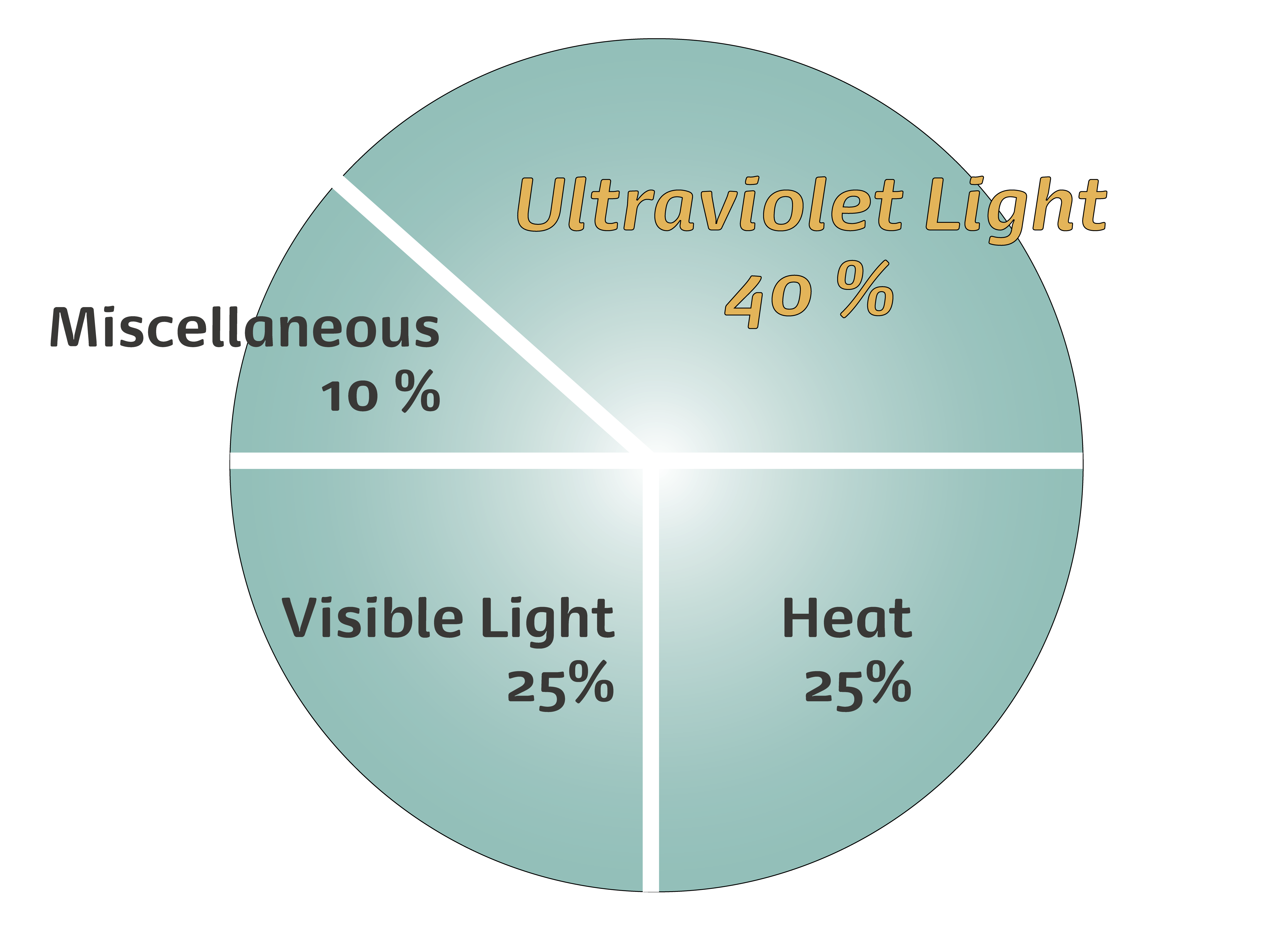So you’re shopping for a picture frame – What makes a person choose to custom frame rather than buy a pre-made? One of the many reasons is frame glass. Did you know that there are several types of glazing (aka “glass”) available for picture frames? Glazing is often overlooked, and yet is a crucial part of your frame.
The Invisible Enemy…
Ever see a photo turn yellow as it gets older? Photos turn yellow and/or fade because they did not have protection from humidity, heat, dust – and most importantly artificial and UV light. The right glazing will act as a preservation barrier; protecting your pieces from these elements.
What Causes Artwork Fading

Why do we call it glazing?
Glazing refers to a coating that is manufactured onto picture frame glass or acrylic (Plexiglass). This coating offers varying degrees of protection depends on the type of glazing. The most commonly used glazing is regular picture glass – This is what you’ll find in a standard pre-made frame. But there’s also anti-reflective, acrylic (Plexiglass), and a range of conservation or museum-quality choices.
So, how do you decide what to choose?
The type of glazing you select will depend on your style, budget, what you are framing, and where the piece will hang. If the item you are having framed has either financial or sentimental value, we recommend considering a high preservation option.
At Heritage Art Galleries & Framing, we work with a wide range of glazing for all types of projects:

Regular picture glass
PROS: Sometimes called standard, float glass, or basic glass, it’s strong, virtually scratch-proof, and the least expensive option. Regular glass is also easy to clean with standard glass cleaner.
CONS: Breakable, heavy, and doesn’t contain any anti-reflective properties. Limited to a maximum size of 40″x60.” Not ideal for rapid temperature change. Basic glass has a slight green tint which to the trained eye can make the colors of your piece appear slightly off.
Ultra Vue anti-reflective glass
PROS: A customer favorite! While only a little higher in price than regular glass; it absorbs virtually all low light reflections, eliminating reflections and glare from around the room. When looking at it, you can barely tell that glass is there at all! It’s also water white, which means there is no tint to the glass.
CONS: Only 70% UV protection, you will still see reflection from direct light sources like a bright window or lamp. Limited to a maximum size of 40″x60.” Not ideal for rapid temperature change.
Acrylic, aka Plexiglass
PROS: Acrylic is much lighter than glass, is very difficult to break, and available in regular, Optium, and non-glare, as well as standard and conservation-quality. Shipping your piece? Go with acrylic for lighter weight! It’s also much easier and safer to ship framed pieces with acrylic glazing, especially if the piece is large in size.
CONS: It can get micro-scratches and can carry a static charge. It is a little more expensive than glass. Furthermore, because it’s made of plastic, regular glass cleaners and paper towel are not recommended. Use a soft cloth and ammonia-free cleaner to avoid fogging of the glass. It can yellow over time, but this can take up to 30 years.
Optium Acrylic
Pros: This is the cream of the crop and comes with all the bells and whistles. It is lightweight, anti-static, scratch-resistant, has the same anti-reflective properties as Museum Glass/Ultra Vue, 99% UV protective, and is crystal clear (it has no hue/tint). It also can adapt more rapidly to changes in temperature than glass where glass often becomes foggy on the inside over time due to humidity being trapped inside the frame. Not limited to 40″x60″ like all other glass options. The only acrylic option for sensitive artworks!
Con: Can yellow over time, but this can take up to 30 years.
Conservation Glass
Pros: Has the same pros as regular picture glass but with the additional benefit of being 99% UV protective.
CONS: Breakable, heavy, and doesn’t contain any anti-reflective properties. Limited to a maximum size of 40″x60.” Not ideal for rapid temperature change. Has a slight brownish-red tint to the trained eye.
Museum Glass
Pros: 99% UV protective and anti-reflective
CONS: Still glass, so a little heavy especially on larger pieces, can break if mishandled and because of its UV coating has the same reddish-brown tint as Conservation Clear. You will still see reflection from direct light sources like a bright window or lamp. Limited to a maximum size of 40″x60″. Not ideal for rapid temperature change.
What are you Framing?
Different glazing options are recommended depending on the type of artwork you are framing…
Loose media (charcoals or pastels)
Regular acrylic is not recommended because it can build up a static charge, which will attract the pigment particles off the paper and onto the frame. Optium acrylic has anti-static properties suited for these special applications if you need a lightweight acrylic option.
Canvas Paintings
Did you know that it can take years for oil paint to completely dry? For this reason, it is in many cases recommended to not to put oil paintings behind glass so they can “breathe.” Glass on an oil painting may trap moisture behind it, which could lead to canvas rot. It is argued that all canvas art should not be framed with glass for the same reasons.
Prints, Pictures, and Keepsakes
Valuable prints, pictures, and other works on paper as well as keepsake items are delicate in nature and can become brittle and stained when exposed to the elements. Acid free mats, backings, and UV filtering glazing are recommended to protect these items.
From charcoal artworks to vintage posters, the framers at Heritage Art Galleries have the expertise to help guide you to the ideal glazing for your piece. You can have peace of mind knowing your art will stand the test of time!




